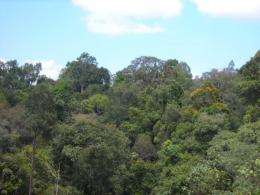Rainforest regeneration in Indonesia slower than expected

Research conducted by Tyas Basuki at University of Twente’s Faculty of Geo-Information Science and Earth Observation (ITC) shows that felled tropical rainforest in Indonesia (of the Dipterocarp species) is growing back much slower than expected. Based on the available knowledge at the time, the Indonesian government stipulated that an area may be logged only once every 35 years. Basuki's research, however, shows that in order to guarantee genuine sustainable forest management, countries must adhere to a minimum logging cycle of 120 years. Basuki defended her PhD thesis on 24 May.
The Dipterocarp species is a type of tropical rainforest very common throughout Asia and is the most popular wood for logging in Southeast Asia. In order to promote sustainable forest management, a certain amount of time needs to elapse between logging cycles to allow the forest time to regenerate (as a tree grows, it absorbs CO2 from the air, which it then converts into biomass; when a tree is felled, the CO2 returns to the atmosphere by means of a number of steps). In Indonesia – a major timber-producing country – the government has set the minimum period between logging cycles at 35 years. This period was intended to ensure that wood could continue to be logged indefinitely without reducing the total volume of timber. It was expected that the same amount of carbon could be captured in 35 years (in the form of CO2) as was being lost during the logging process.
However, Tyas Basuki’s research findings show that although the trees grow back, the growth in total biomass – and the subsequent carbon storage – occurs at a much slower pace than previously thought. Basuki demonstrates that in order to guarantee genuine sustainable forest management, the logging cycle should be extended from 35 to 120 years. In conducting her research, she wanted to determine precisely how much aboveground biomass per unit area was present in the forest. Basuki was able to obtain this data by combining local measurements with a variety of measurements taken from satellites. The measurements were taken in the forest during the logging season in order to avoid felling any trees specifically for the purposes of her research. This method enabled her to measure the amount of biomass in the tropical forests 17 to 28 per cent more accurately than was hitherto possible.
Provided by University of Twente
















